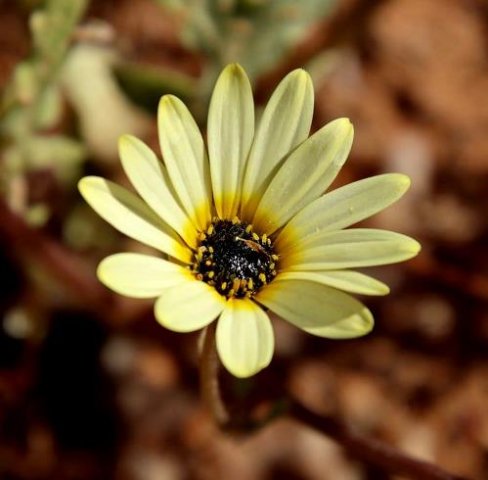Ursinia

Author: Ivan Lätti
Photographer: Carolyn Etsebeth
Ursinia is a genus of annual and perennial herbs as well as subshrubs in the Asteraceae or daisy family. The alternate leaves are quite variable, their margins entire, toothed or cleft to near the midrib.
The flowerheads grow solitary or in loose corymbs on peduncles of varying length. Most species have ray florets around the many-flowered central discs. The involucre is bell-shaped, made up of five to seven rows of free, hairless bracts. The outer bracts usually have brown margins, the margins of the inner bracts membranous. The receptacle is flat or convex with a honeycomb structure on its surface covered in chaffy scales.
The ray florets are sterile or sometimes female. They are coloured white, yellow or orange, rarely red and sometimes coppery on their lower or outer surfaces. The disc florets are tubular, their upper ends five-lobed, coloured yellow, purple or coppery. The disc florets are bisexual, sometimes barring the central ones that are female and sterile. There are appendages to the disc floret anthers and linear branches on the styles.
Ursinia fruits are ribbed and hairless or with hairy tufts that are erect or curved, the hairs sometimes glandular. The pappus that is mostly present has one row of five to ten variable scales, or two rows of which the outer five are scales, the inner five bristles. The scales on these fruits sometimes make them resemble small flowers, nothing like Ursinia ones though.
There are 39 Ursinia species in Africa, all occurring in southern Africa and most in the winter rainfall region. One species extends to Ethiopia. Some ursinias are well browsed by game and stock.
The flowerhead in picture may be Ursinia anthemoides (Leistner, (Ed.), 2000; Vlok and Schutte-Vlok, 2015; Manning, 2007).

